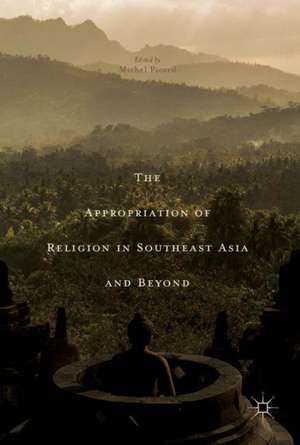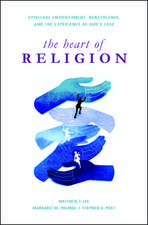The Appropriation of Religion in Southeast Asia and Beyond
Editat de Michel Picarden Limba Engleză Hardback – 24 aug 2017
| Toate formatele și edițiile | Preț | Express |
|---|---|---|
| Paperback (1) | 581.16 lei 38-44 zile | |
| Springer International Publishing – 3 aug 2018 | 581.16 lei 38-44 zile | |
| Hardback (1) | 897.65 lei 6-8 săpt. | |
| Springer International Publishing – 24 aug 2017 | 897.65 lei 6-8 săpt. |
Preț: 897.65 lei
Preț vechi: 1094.69 lei
-18% Nou
Puncte Express: 1346
Preț estimativ în valută:
171.82€ • 186.70$ • 144.42£
171.82€ • 186.70$ • 144.42£
Carte tipărită la comandă
Livrare economică 21 aprilie-05 mai
Preluare comenzi: 021 569.72.76
Specificații
ISBN-13: 9783319562292
ISBN-10: 3319562290
Pagini: 332
Ilustrații: XI, 285 p. 12 illus., 10 illus. in color.
Dimensiuni: 148 x 210 mm
Greutate: 0.64 kg
Ediția:1st ed. 2017
Editura: Springer International Publishing
Colecția Palgrave Macmillan
Locul publicării:Cham, Switzerland
ISBN-10: 3319562290
Pagini: 332
Ilustrații: XI, 285 p. 12 illus., 10 illus. in color.
Dimensiuni: 148 x 210 mm
Greutate: 0.64 kg
Ediția:1st ed. 2017
Editura: Springer International Publishing
Colecția Palgrave Macmillan
Locul publicării:Cham, Switzerland
Cuprins
1: Introduction: Local Traditions and World Religions. Encountering ‘Religion’ in Southeast Asia and Melanesia.- 2: About Buddhist Burma. Thathana, or ‘Religion’ as Social Space.- 3: The (Re)configuration of the Buddhist Field in Post-Communist Cambodia.- 4: Re-connecting the Ancestors: Buddhism and Animism on the Boloven Plateau, Laos.- 5: Balinese Religion in the Making: An enquiry About the Interpretation of Agama Hindu as ‘Hinduism’.- 6. Return to the Source: A Balinese Pilgrimage to India and the Re-enchantment of Agama Hindu in global modernity.- 7.- A Wall, Even in Those Days! Encounters with Religions and What Became of the Tradition.- 8:Encounters with Christianity in the North Moluccas (16th-19th Centuries).- 9: Continuity and Breaches in Religion and Globalization, a Melanesian Point of View.
Recenzii
“The Volume provides a range of ethnographic case studies that – together with Michel Picard’s insightful introduction – contribute new perspectives to the study of religion in the Southeast Asia-Pacific region, and, more generally, to the anthropology of religion. … The volume is thus a strong reminder, not just for anthropologists of Southeast Asia but also for scholars and students of other disciplines and regions, that it is necessary to deconstruct and historicize the categories in which we have come to think.” (Kirsten W. Endres, SOJOURN - Journal of Social Issues in Southeast Asia, Vol. 34 (1), March 2019)
Notă biografică
Michel Picard is a retired senior researcher at the French National Centre for Scientific Research (CNRS) and a founding member of the Centre for Southeast Asian Studies (“Centre Asie du Sud-Est”, CNRS-EHESS) in Paris. An anthropologist by training, he has published extensively in the field of Balinese studies, specifically on tourism, culture, identity, ethnicity and religion.
Textul de pe ultima copertă
This volume investigates various processes by which world religions become localized, as well as how local traditions in Southeast Asia and Melanesia become universalized. In the name of modernity and progress, the contemporary Southeast Asian states tend to press their populations to have a ‘religion,' claiming that their local, indigenous practices and traditions do not constitute religion. Authors analyze this ‘religionization,’ addressing how local people appropriate religion as a category to define some of their practices as differentiated from others, whether they want to have a religion or are constrained to demonstrate that they profess one. Thus, ‘religion’ is what is regarded as such by these local actors, which might not correspond to what counts as religion for the observer. Furthermore, local actors do not always concur regarding what their religion is about, as religion is a contested issue. In consequence, each of the case studies in this volume purposes to elucidatewhat gets identified and legitimized as ‘religion’, by whom, for what purpose, and under what political conditions.
Caracteristici
Combines anthropological and historical approaches with philology and political science Contains case studies based on local research Uses both theoretical and empirical data Includes supplementary material: sn.pub/extras










